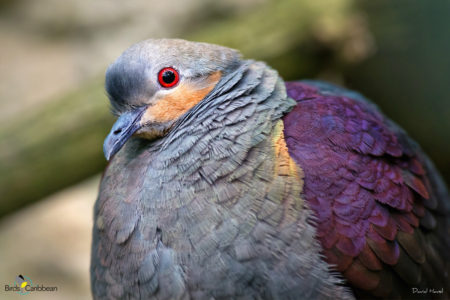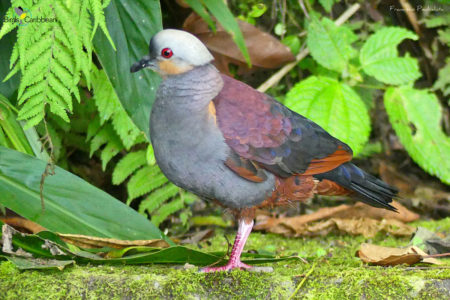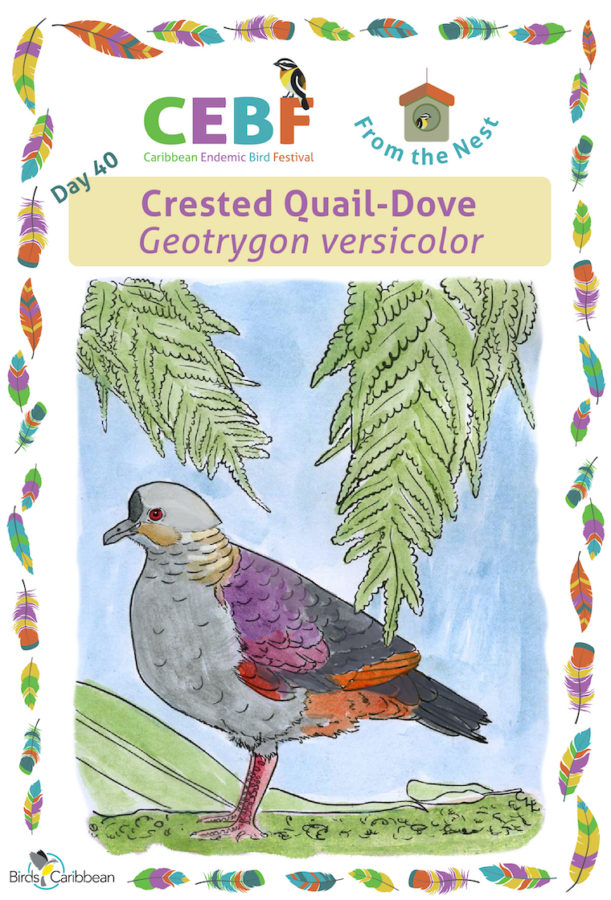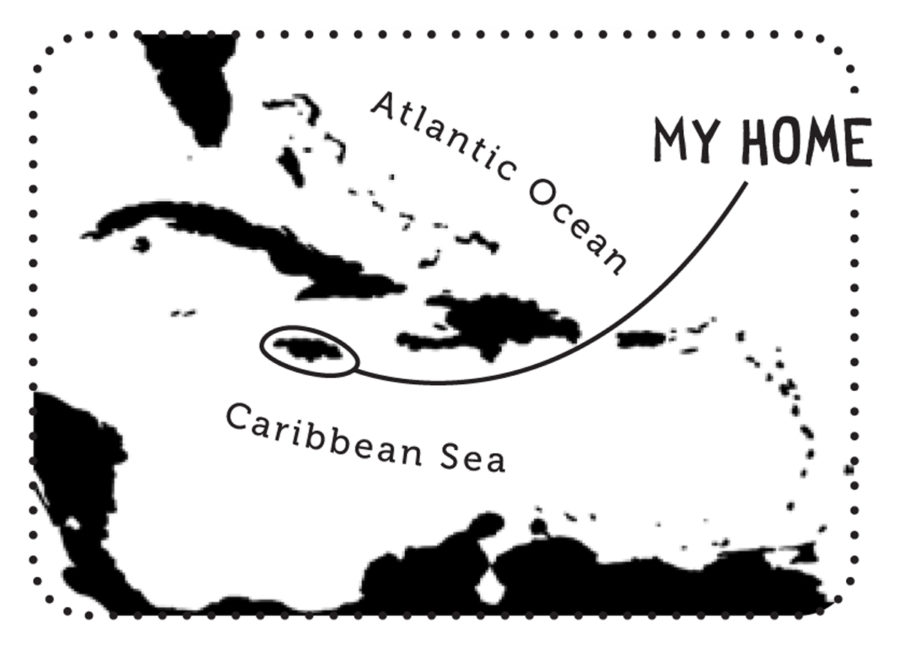Celebrate the Caribbean Endemic Bird Festival (CEBF) with us in our virtual “From the Nest” edition! Have fun learning about a new endemic bird every day. We have colouring pages, puzzles, activities, and more. Download for free and enjoy nature with your family at home.
Endemic Bird of the Day: Crested Quail-Dove
You have to get up early if you want to see Jamaica’s endemic Crested Quail-Dove. And you will have to be in the mountains—in the dense, dripping wet, thousand shades of green foliage, coolness of the mountains. If you’re lucky, you may first detect its presence by a rustling of leaves on the hillside beside you. Freeze and you may spot one, walking along the forest floor, looking for fruits and seeds. It will be bobbing its plush, grey, helmeted head and tail as it struts along; its beady, red-ringed eyes seeking out small fruits and seeds on the ground.
When you see a Crested Quail-Dove you will know, because it is coloured like no other Jamaican bird. It has an iridescent reddish-purple upper back that contrasts with its grey neck, crest, and underparts; an iridescent purplish-blue lower back, and reddish primaries and secondaries (flight feathers). Keep still and savour the experience while you can. If it sees you, it may fly heavily a short distance and vanish back into the safety of the undergrowth. Sometimes it freezes on the ground or on a low perch, allowing for extended views.
The Crested Quail-Dove lives in the Blue and John Crow Mountains, Mt. Diablo area, and Cockpit Country. Locals call it Mountain Witch, Blue Dove or Blue Partridge. It’s two-part song is a mournful whuuOh..whuu, the first note sharp with the following notes softer and lower in pitch. The dove is much more likely to be heard than seen. Like other forest birds, its long-term survival will depend on preservation of Jamaica’s forests.
There are nine species of quail-dove in the genus Geotrygon and each one is uniquely beautiful. They are all found in the tropical or subtropical forests of the Caribbean and Central and South America. The Crested Quail-Dove was the first to be named by the nineteenth century naturalist, Philip Henry Gosse. “No description can give an adequate notion of the lustrous radiance of this most lovely bird,” he wrote in his book, “The Birds of Jamaica” published in 1847. When you see one you will agree with him. Learn more about this species, including its range, photos, and calls here.
Colour in the Crested Quail-Dove!
Download the page from Endemic Birds of the West Indies Colouring Book. Use the drawing above or photo below as your guide, or you can look up pictures of the bird online or in a bird field guide if you have one. Share your coloured-in page with us by posting it online and tagging us @BirdsCaribbean #CEBFfromthenest
Listen to the song of the Crested Quail-Dove
The Crested Quail-Dove‘s song is a mournful two-note whuuOh..whuu, the first note sharp and the second note softer and lower in pitch. The dove is much more likely to be heard than seen.
Puzzle of the Day
Click on the image below to do the puzzle. You can make the puzzle as easy or as hard as you like – for example, 6, 8, or 12 pieces for young children, all the way up to 1,024 pieces for those that are up for a challenge!


Activity of the Day
FOR KIDS & ADULTS: Check out the videos of this elusive endemic bird! The first video shows a close-up view of a handsome Crested Quail-Dove perched on a branch. The second video shows the dove walking along the road with it unique habit of bobbing its head and tail. BirdsCaribbean member and guide, Ricardo Miller, helped James Currie of Nikon’s Birding Adventures find this bird on the famed birding hotspot, Ecclesdown Road, in the Blue and John Crow Mountains, Jamaica.


